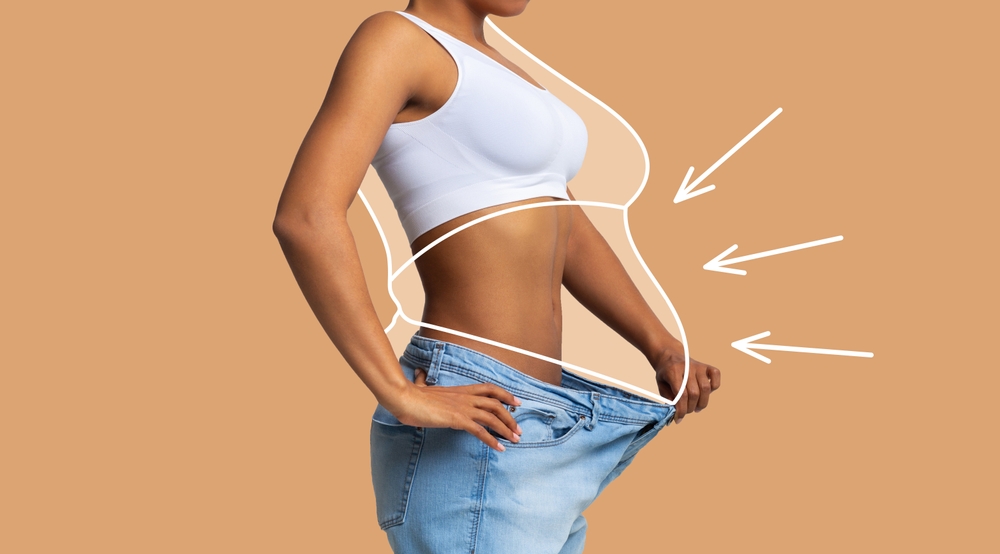Improving flexibility, increasing focus and managing stress, the benefits of practising yoga regularly are vast. Many people even get involved in a 30 days yoga challenge for weight loss for the experience. However, these yoga challenges are not just created to reshape the human body but also to rejuvenate your soul.
Through these yoga challenge camps, you can unlock the secret to a healthier, balanced and focused life.
Let’s talk about a few yoga asanas that help build muscle strength, tone your body, and help you lose weight at home.
How Yoga Can Help You In Weight Loss?
Yoga aids in weight loss by combining physical movement, breath control, and mindfulness to create a holistic approach to overall well-being. This practice of yoga involves a series of poses and sequences that engage various muscle groups, increasing strength, flexibility, and metabolism.
Additionally, the mindful aspect of yoga helps reduce stress and emotional eating giving way to healthier eating habits. By encouraging body awareness, individuals become more aware about their hunger cues and learn to differentiate between emotional and physical hunger.
Performing yoga practice on a regular basis also improves digestion, aiding in the body’s ability to process and eliminate waste efficiently. However, you can even cross-check a few yoga poses for better digestion.
As a result, yoga not only burns calories and builds lean muscle but also promotes a balanced and positive relationship with one’s body, leading to sustainable weight loss and long-term wellness.

30 Days Yoga Challenge Weight Loss: 10 Asana To Perform At Home
Although there are no particular yoga poses that will result in weight loss, there are several asanas that, if combined, can help you build strength and muscle mass. So, here is a list of yoga asanas that can help you lose weight and strengthen your mind.
Mountain Pose (Tadasana)
Stand tall with feet together, grounding through all four corners of your feet. Now try to lengthen your spine, strengthen your core, and relax your shoulders. This tadasana yoga improves posture, enhances body awareness, and promotes overall balance and stability.
Downward Facing Dog (Adho Mukha Svanasana)
Start in a plank position, then lift your hips up and back to form an inverted V-shape. Press your palms into the mat, spread your fingers wide, and actively push your heels towards the floor. These asanas help you in strengthening the entire body while calming the mind.
Warrior II (Virabhadrasana II)
Step one foot back, align it with the front heel and bend the front knee to a 90-degree angle. Extend your arms parallel to the ground, gazing over the front fingertips. Warrior II builds strength in the legs and opens the hips, fostering a sense of determination and focus.
Tree Pose (Vrikshasana)
Stand on one leg, placing the sole of the opposite foot on the inner thigh or calf (avoid the knee). Then, bring your hands to the prayer position at the heart centre. This helps with the balancing pose, enhances concentration and strengthens the ankles while promoting a feeling of rootedness and grace.
Cobra Pose (Bhujangasana)
Lie on your belly while placing your palms under your shoulders. Inhale and lift your chest off the ground, keeping your elbows close to the body. Cobra pose stretches the front body, improves spine flexibility, and stimulates the digestive organs.
Bridge Pose (Setu Bandhasana)
In this asana lie on your back with knees bent and feet hip-width apart. Now, press into your feet and lift your hips off the mat, interlacing your hands underneath you.
This pose strengthens the back, opens the chest, and invigorates the entire body.
Child’s Pose (Balasana)
Kneel down and sit back on your heels, then fold forward, extending your arms in front of you. This gentle resting pose has the ability to relieve tension in the shoulders and back while calming the mind and promoting relaxation.
Plank Pose
Begin in a push-up position, with wrists aligned under the shoulders. Always engage yourself in the core and keep your body in a straight line from head to heels. Moreover, the plank pose also strengthens the core, arms, and shoulders, building stability and endurance.
Seated Forward Bend (Paschimottanasana)
Sit with legs extended in front of you and hinge at the hips to reach towards your toes. Keep your spine straight and lengthen the front body. This pose stretches the hamstrings and lower back and calms the nervous system.
Corpse Pose (Savasana)
Lie flat on your back with arms at your sides and palms facing up. Close your eyes and relax your entire body, allowing your breath to flow naturally. Savasana is a restorative pose that allows the body to integrate the benefits of the practice and promotes deep relaxation and inner peace.

30 Day Yoga Challenge Weight Loss: Precautions And Tips
While practising yoga for weight loss, it’s important to take certain precautions to ensure a safe and effective experience.
So, here let us share some precautions to keep in mind while 30 day yoga challenge for weight loss:
Start Gradually: If you are new to the world of yoga, begin with beginner-friendly classes or poses. Also, avoid pushing yourself too hard in the initial days as it can lead to sudden jerks and injuries.
Listen To Your Body: Try to pay close attention to your body’s signs during practice. If you feel any kind of discomfort then you can immediately modify the pose or take a break.
Pick The Right Style: Many yoga styles help in weight loss, however some of them are more intense than others. So, always opt for styles, for example Vinyasa, power yoga, or ashtanga that involve continuous movement.
Balanced Diet: It should always be remembered that weight loss primarily depends on a balanced diet. So, you should integrate your yoga practice with a healthy eating plan to get remarkable results.
Stay Hydrated: Focus on staying hydrated by drinking plenty of water before, during, and after your yoga sessions, especially if you are performing vigorous forms of yoga.
Avoid Overeating Post Practice: Sometimes, people tend to overcompensate for the calories burned during exercise by overeating. Be mindful of your post-yoga eating habits to support your weight loss goals.
Avoid Comparisons: Yoga is a personal journey, and everyone’s body is different. Avoid comparing yourself to others in the class and focus on your progress.
CONCLUSION In the end I would like to conclude this article by saying that After 30 days of yoga, an individual will feel less weakness in places like knees and hips. Performing yoga regularly will also help you to calm your body and soul which is far better than running 5 km or lifting heavy weights. Also, you will feel strength in your overall body.



